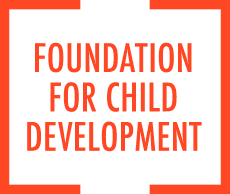https://www.fcd-us.org/language-as-a-barrier-to-health-care-for-new-york-city-haitian-russian-and-latino-perspectives/
More than half of New York City’s Haitian, Russian, and Latino first-generation immigrants interviewed for a new report by The New York Academy of Medicine say that language barriers lead to reduced quality care for their children, prevent them from fully using healthcare services, and leave them dissatisfied with their medical care.
Federal, state, and city laws require that interpreter services and translated documents be provided to non-English-speaking patients at all healthcare facilities that serve Medicare and Medicaid patients, including hospitals, health clinics, and Medicaid offices. For example, the New York State Patients’ Bill of Rights requires that a hospital provide interpreters in any language spoken by at least 1 percent of the hospital’s service area.
But implementation of these requirements has been slow and remains inadequate, according to the Academy report, published this month and entitled, Language as a Barrier to Healthcare for New York City Children in Immigrant Families. The 74 foreign-born immigrants interviewed at length in Haitian-Creole, Spanish, and Russian languages for this report said that language barriers kept them from disclosing all symptoms to healthcare professionals, left them without full comprehension of medical information and physicians’ instructions, and resulted in discourteous treatment in a variety of healthcare settings.
Some participants said they delay getting the care they need for themselves and their children after having negative experiences with healthcare providers’ staff who did not speak their language. Others report needing to make repeat visits to a doctor’s office to clarify information that was unclear during the first visit.
The immigrant population of the United States has increased and diversified dramatically in recent years, said Linda Weiss, PhD, lead author of the report and Senior Research Associate in the Academy’s Division of Health Policy. When language barriers prevent immigrants from talking to those involved in the delivery of healthcare services, access to and quality or care suffer. In order to get appropriate healthcare services, immigrants with limited-English language abilities need linguistically appropriate services, not only during the medical visit but also when enrolling in insurance, making appointments, and following instructions on medication labels or leaflets, Weiss said.
New York City is now home to approximately 2.9 million immigrants speaking well over 100 distinct languages. Currently, immigrants and their children account for nearly two-thirds of New York City’s population. The vast majority of study participants (85 percent) reported speaking no English at home. This report is an important addition to the growing body of literature defining the need for, and gaps in, linguistically accessible healthcare services. It is unique in that it focuses on the perspective of patients, including in-their-own-words descriptions of their experiences trying to access insurance and healthcare.
Although the bulk of adults interviewed for this study (80 percent) have enrolled their children in government-funded Medicaid or Child Health Plus insurance plans, over half told of medical encounters with providers who did not speak their language and did not have translators available. These barriers negatively impacted on discussion and comprehension of relevant symptoms and treatments and on willingness to seek needed care down the road.
Consider the comments of a Haitian mother describing a medical encounter at a clinic and detailed in the Academy report: Whenever the person sees that you cannot speak the language, they don’t even bother with you. (When that happens), I feel humiliated, I don’t feel comfortable, I feel embarrassed, she said. A mother from Belarus had a similarly negative experience detailed in the Academy report. She could not enroll her daughter in school because the child was not fully vaccinated, so took her to a vaccination clinic. Most of the patients were Russians, but nobody from the staff spoke Russian, she said. They gave us applications and started explaining something, but we didn’t understand anything they said. We were wondering why they couldn’t provide us with Russian-speaking interpreters so we could communicate on equal terms.
Lacking bilingual staff or interpreters, participants faced delays for even simple matters like scheduling an appointment. Children - even those as young as 9 or 10 years old - as well as other patients in the waiting room were asked to interpret during medical visits. In a city like New York, where the need for translation in healthcare settings is so widespread, appropriate systems must be established, Weiss said. As it stands now, immigrants, who are so vital to the life and the economy of New York, too often receive inadequate and sometimes harmful healthcare due to language barriers.
To improve access to healthcare for the foreign-born and limited English proficiency population, the report recommends that: limited-English populations be informed of their right to an interpreter and to translated documents; healthcare and insurance staff be encouraged to proactively seek translated materials and interpretation services for patients, and avoid disparaging remarks such as you should learn English; interpretation and translation services be made more available, including use of dual headset remote translation as is offered at Bellevue Hospital; federal Medicaid matching funds be used to reimburse interpretation costs in New York, as is already done in nine states; compliance with existing laws be monitored and enforced; and, proposed New York State regulations be adopted to clarify hospitals’ responsibilities to limited-English patients.
The study is the first in a series of three Academy reports on healthcare access for children in immigrant families, and was funded by the Foundation for Child Development. Founded in 1847, The New York Academy of Medicine is an independent, non-partisan, non-profit institution whose mission is to enhance the health of the public. The Academy is a leading center for urban health policy and action working to enhance the health of people living in cities worldwide through research, education, advocacy, and prevention.
